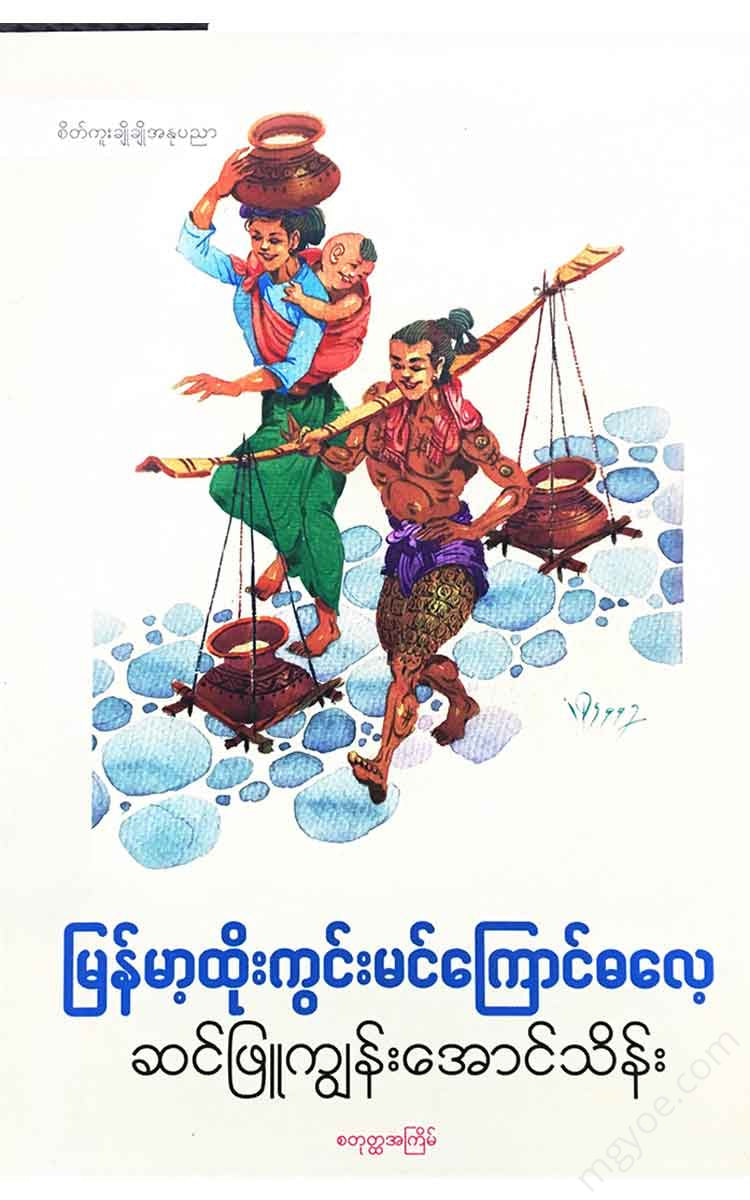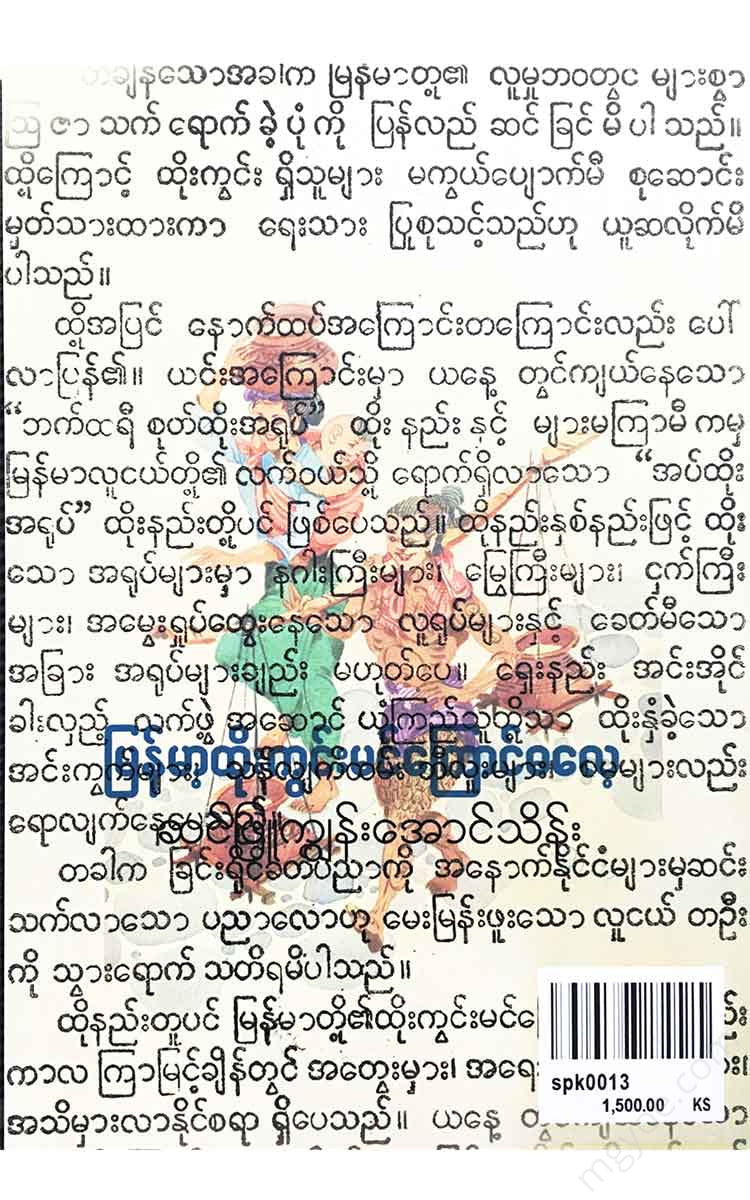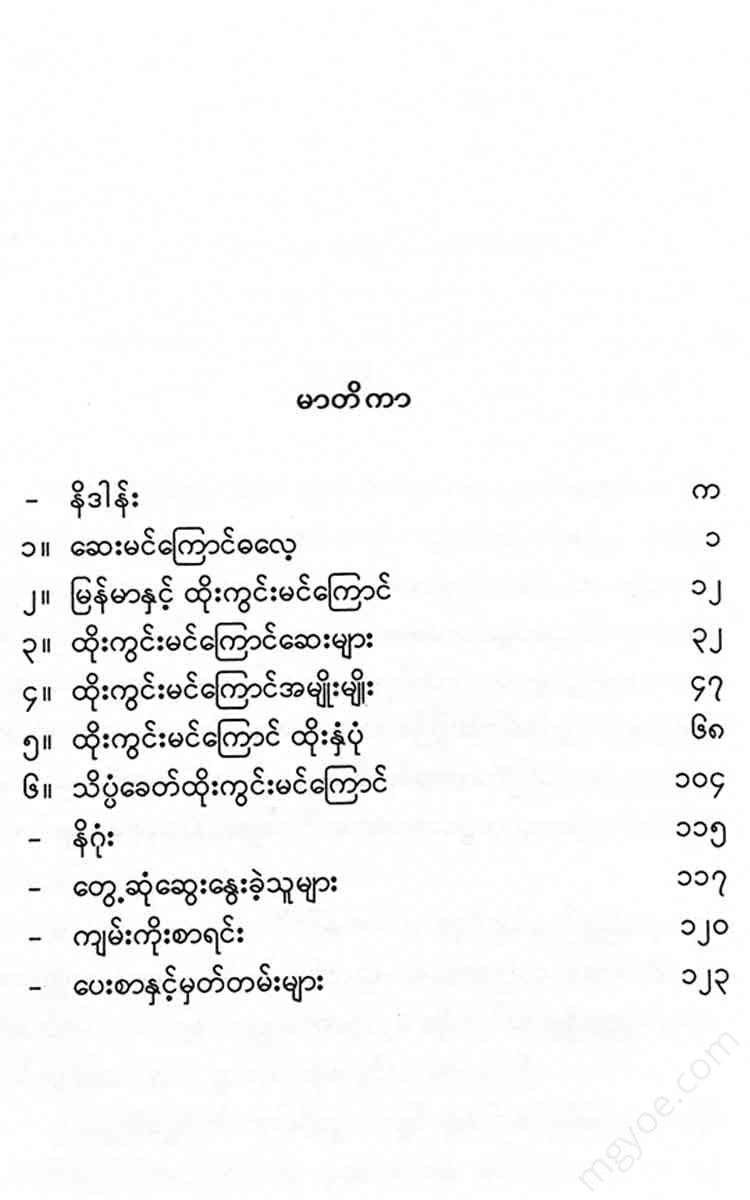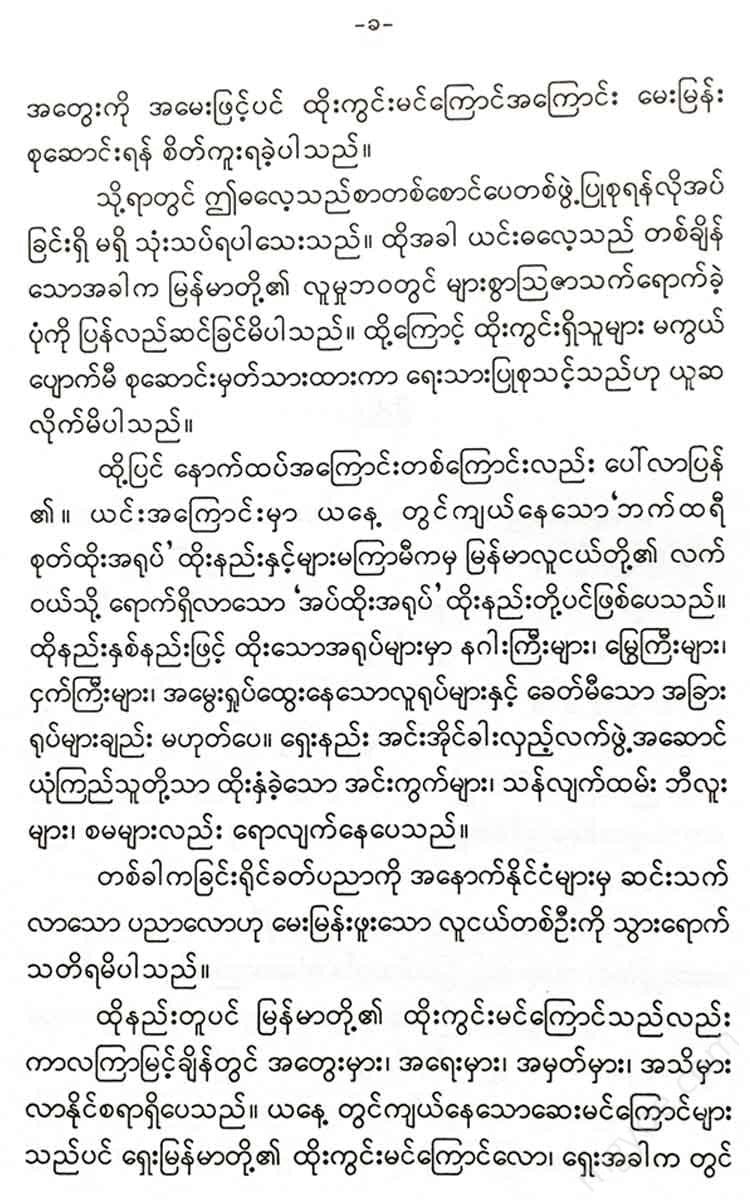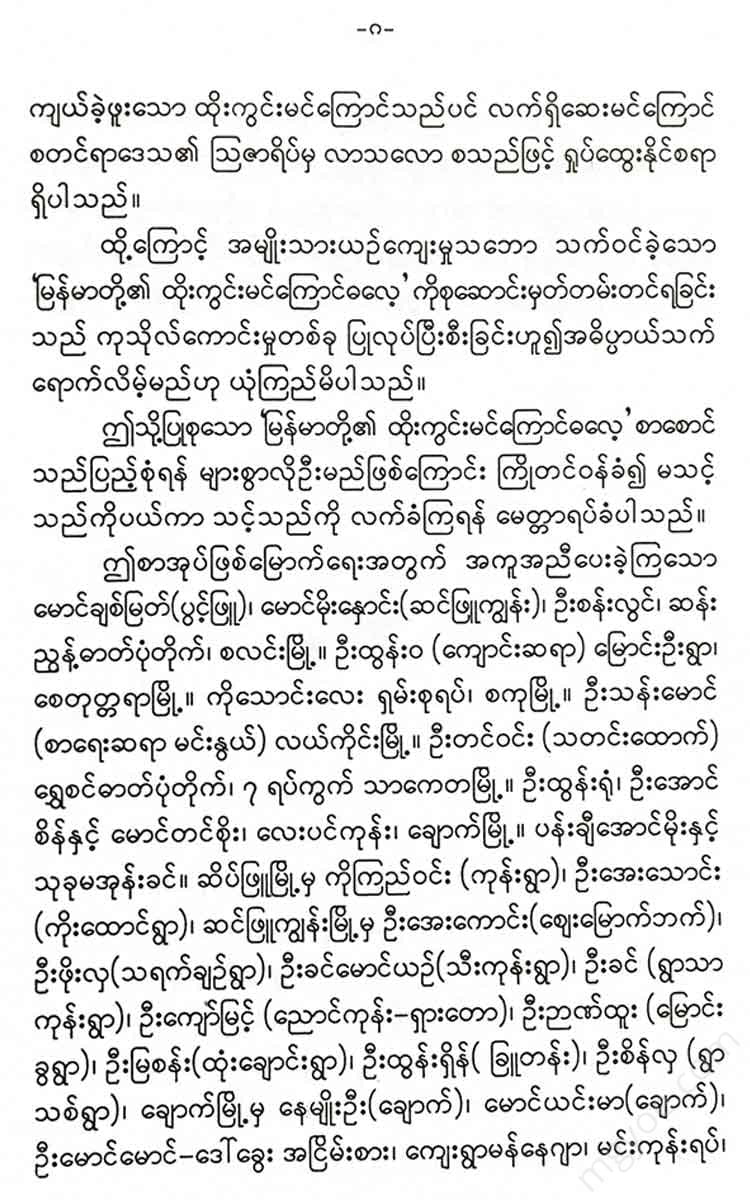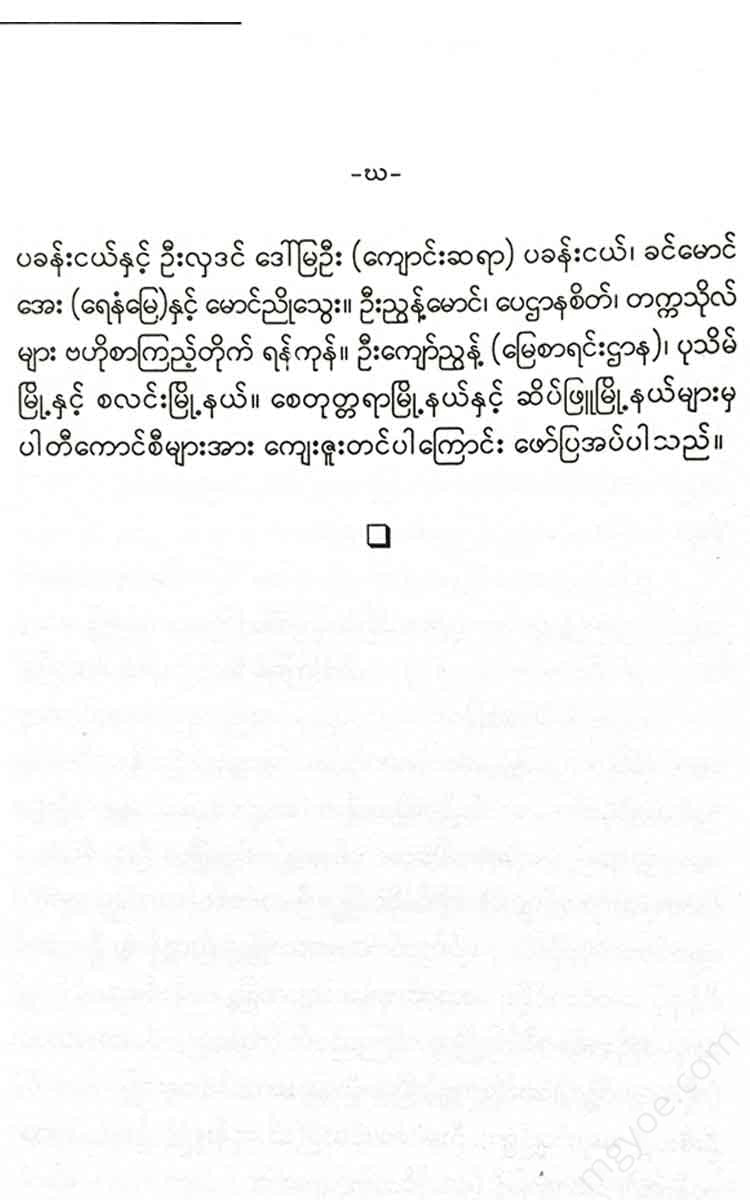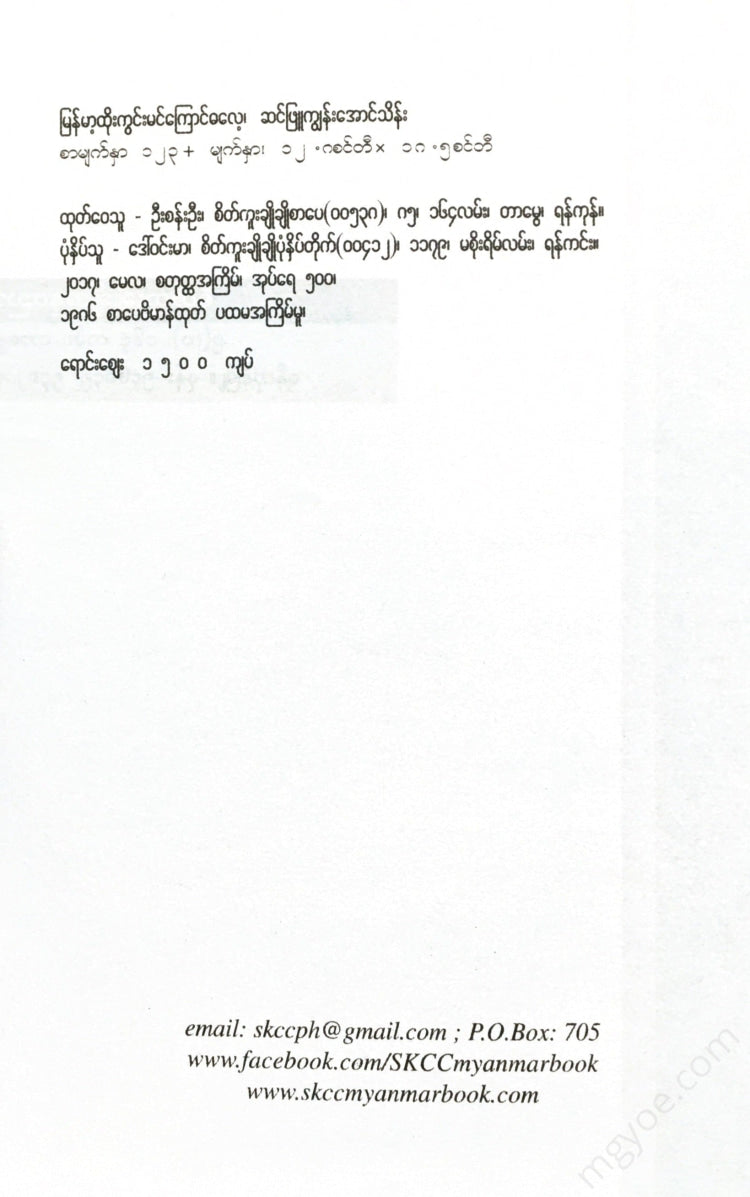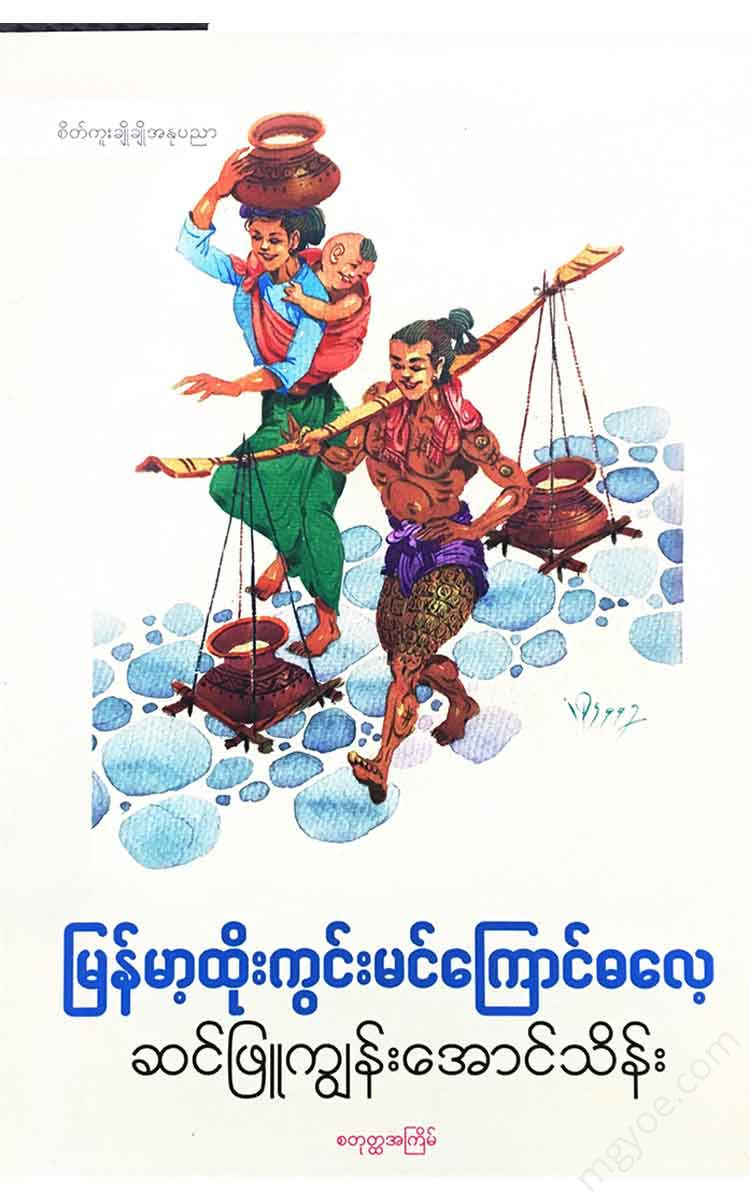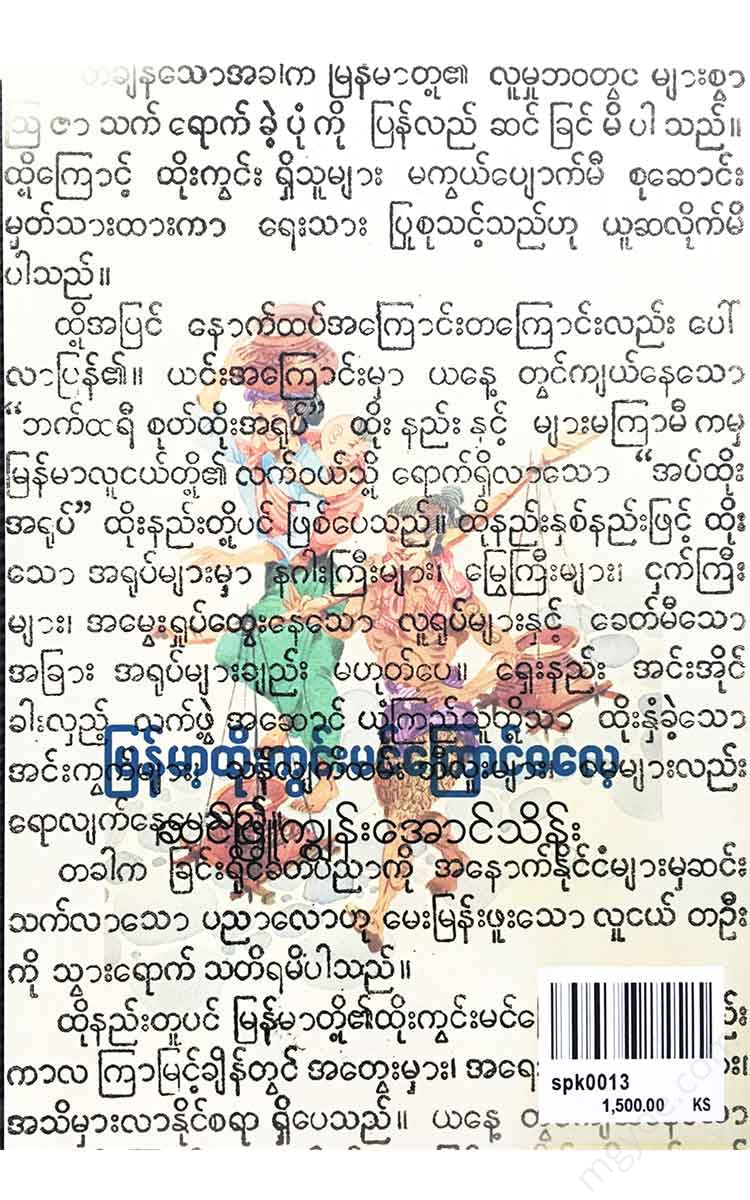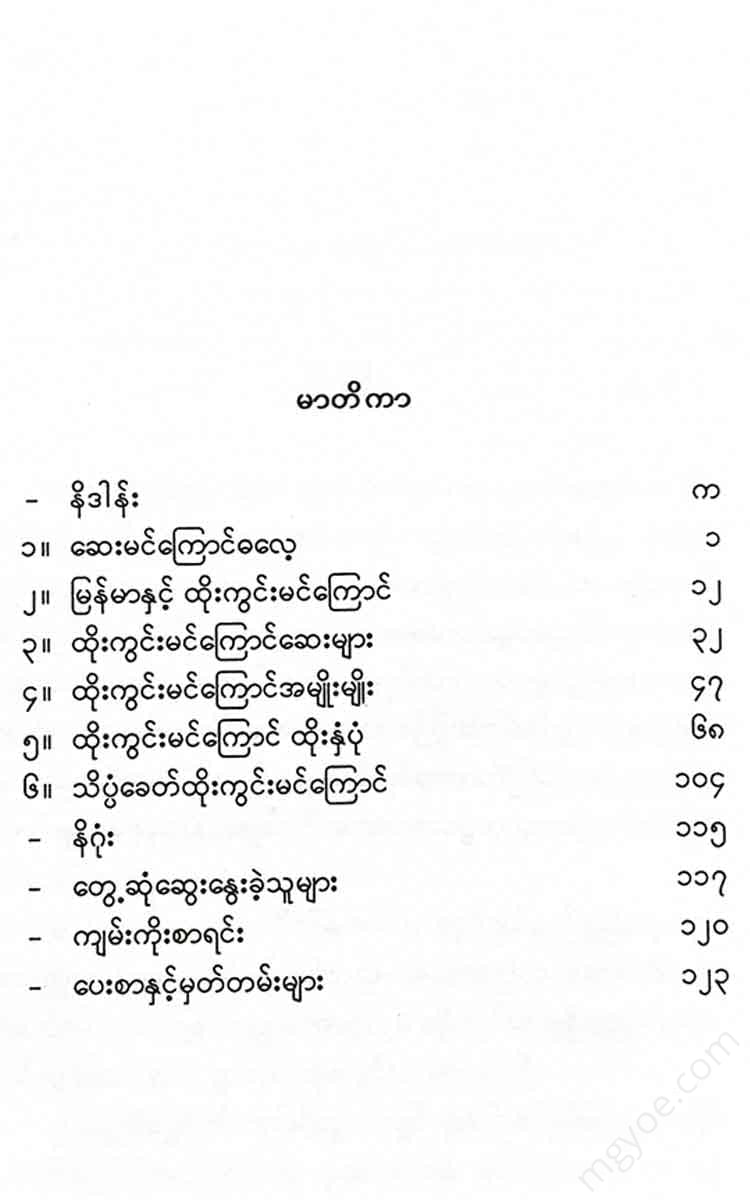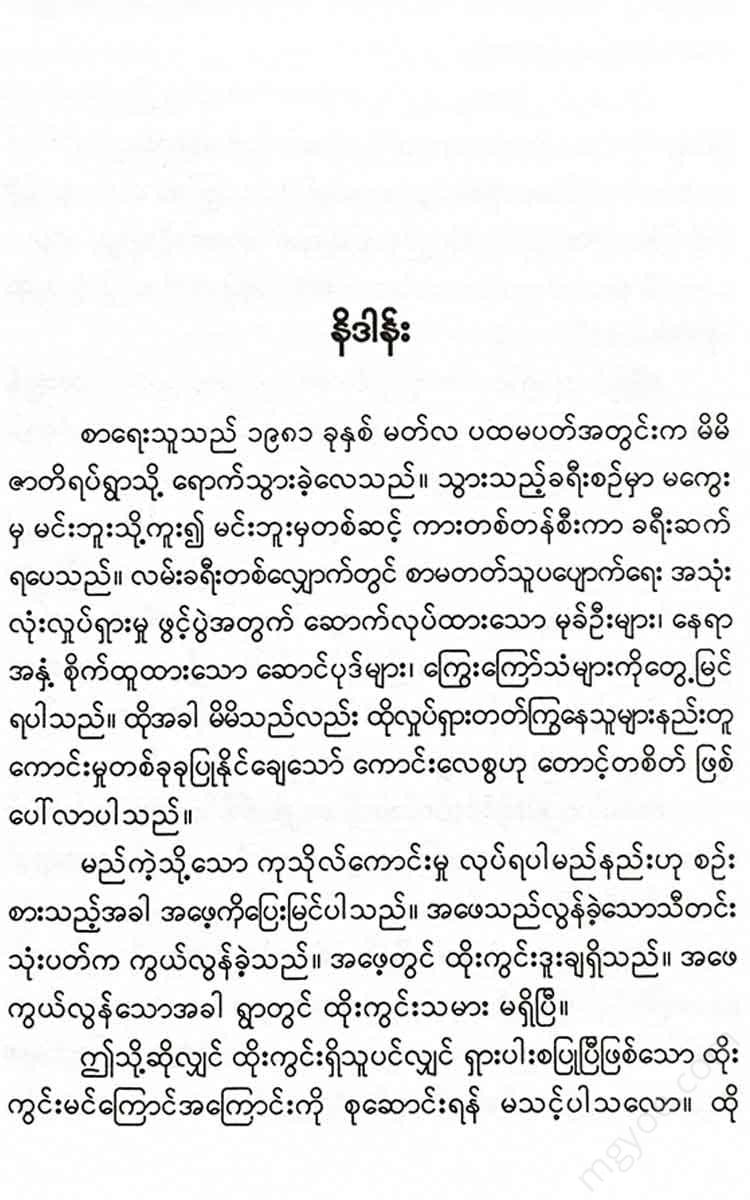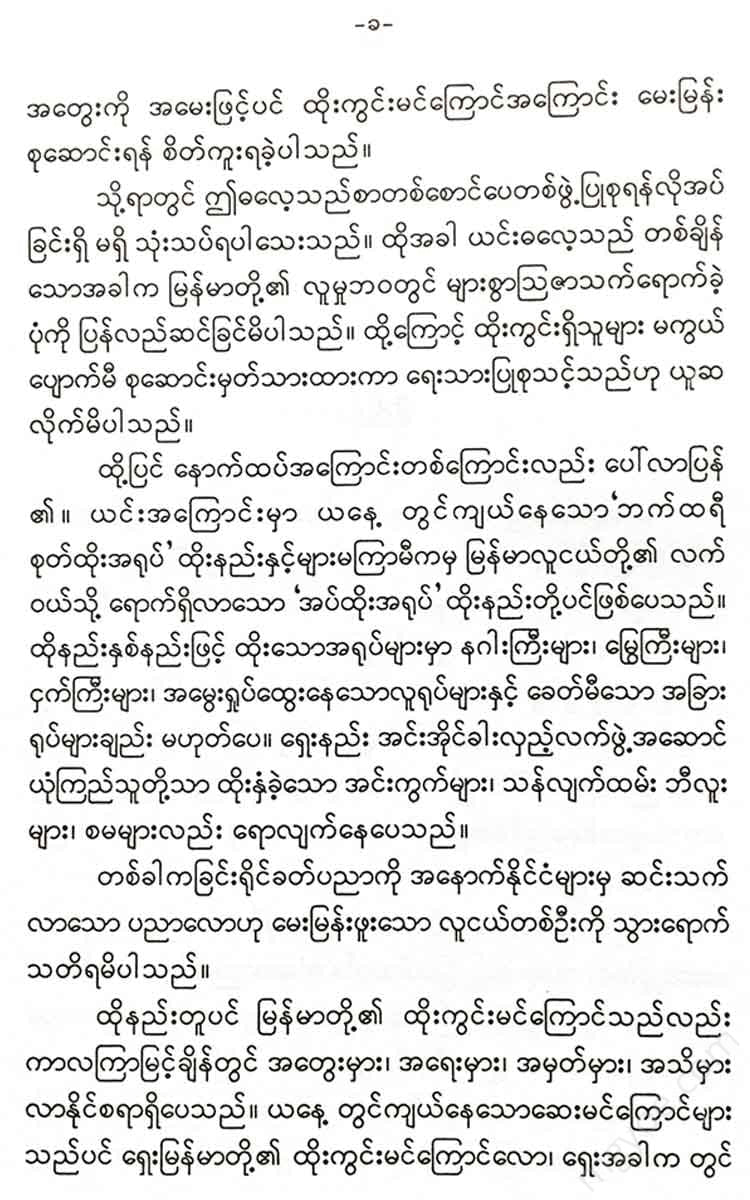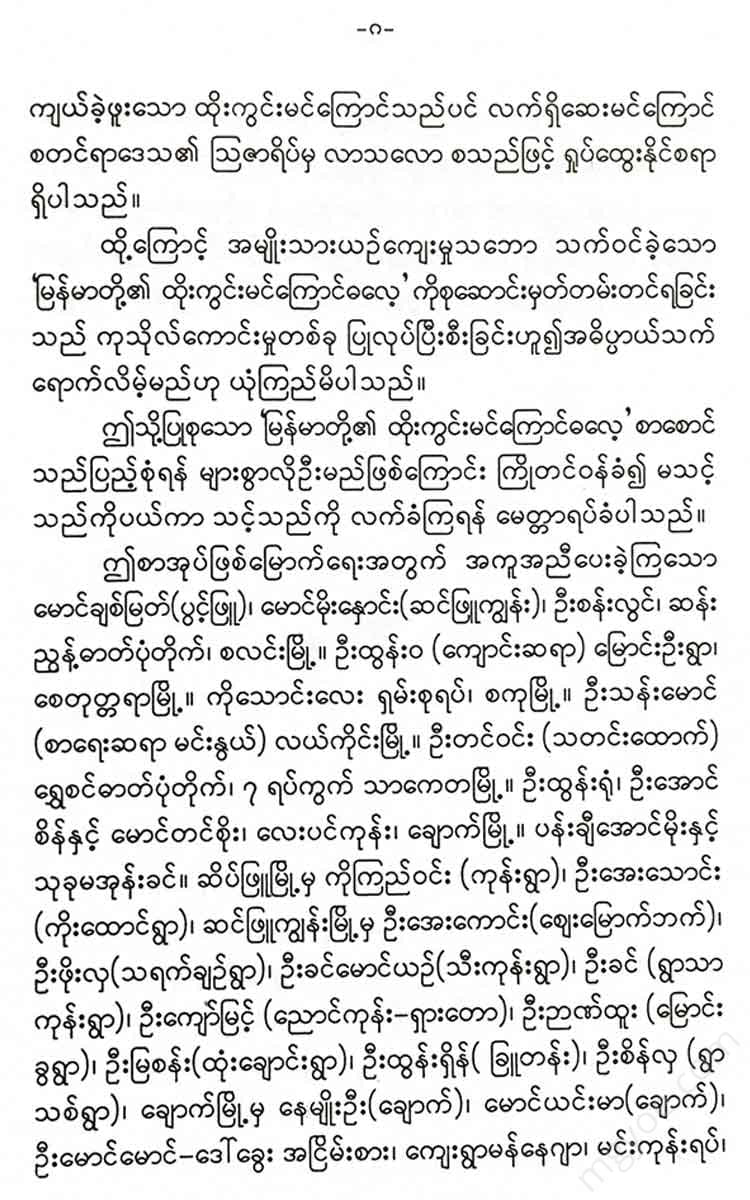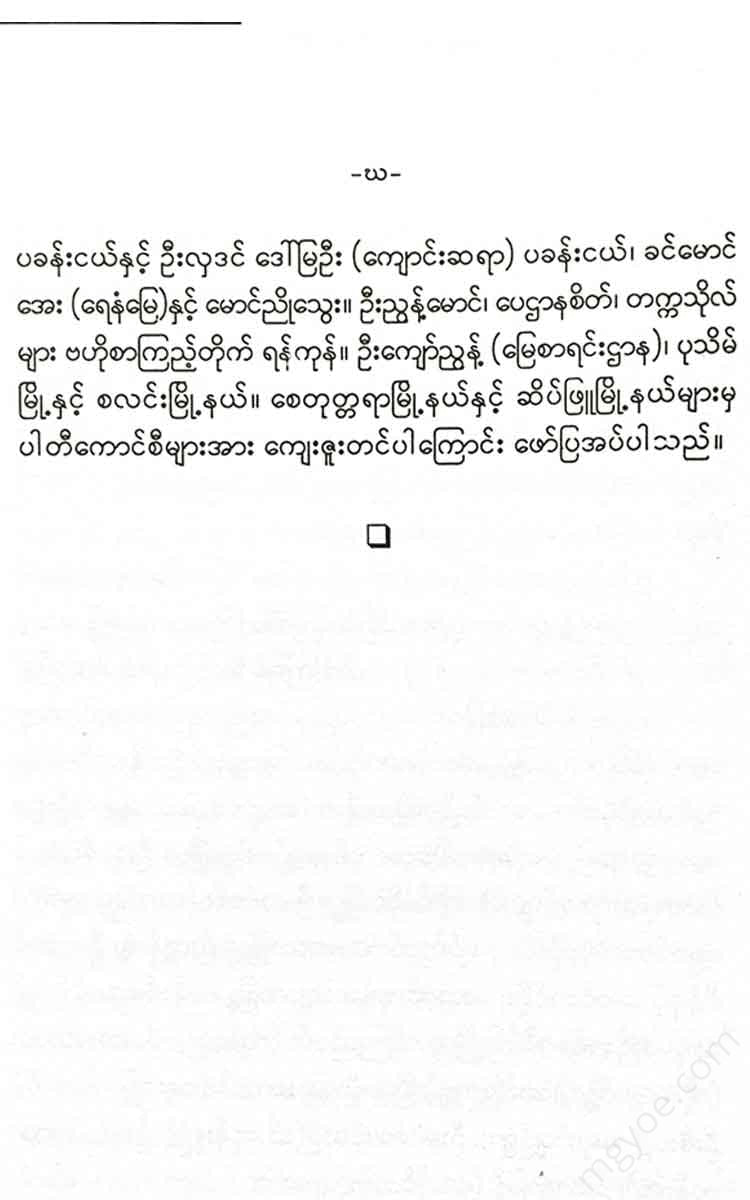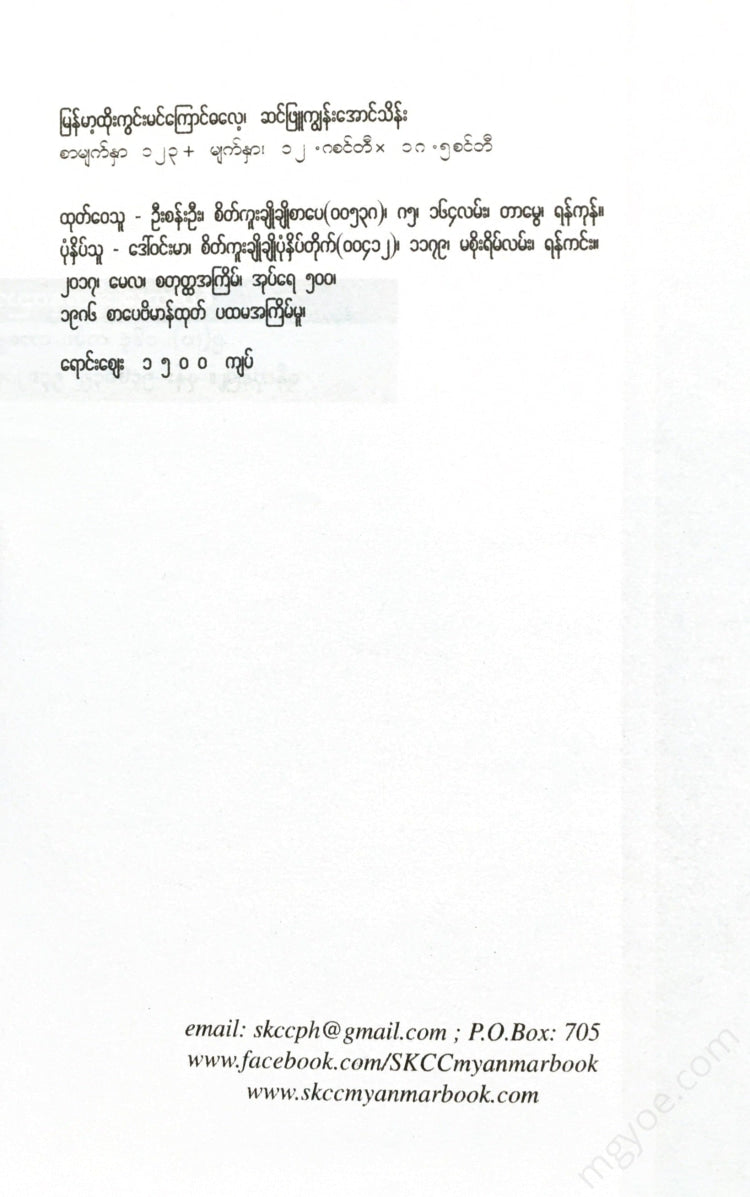စိတ်ကူးချိုချိုစာပေ
Sinphyu Kyun Aung Thein - Burmese tattooing tradition
Sinphyu Kyun Aung Thein - Burmese tattooing tradition
Couldn't load pickup availability
Ice tattoo
The practice of applying ink to a person's skin with sharp objects such as sticks and thorns, and then inserting ornaments such as figurines, tattoos, and flowers, is called tattooing.
Some say that the practice of tattooing originated with the Polynesians, who derived the word tattoo from their language, Ta Tau.
Tattooing is a practice that has been practiced by many peoples around the world. However, it is still unclear when it first appeared. The earliest evidence of tattooing is found in the bodies of people who were found in the Siberian ice fields.
An exhibition of the Altia people of Siberia was recently shown at the British Museum in London. The ice burials are believed to be from the 5th century BC, preserved in ice. They include objects made of gold, silver, and wood, ivory and iron jewelry, weapons such as spears and arrows, severed human heads, and large, dried male corpses.
It was their custom not only to bury such elaborate items, but also to include severed human heads and dried corpses.
This custom involved burying a chieftain in a large pit, along with his belongings and servants, after he died.
Therefore, dried male corpses were found along with the tools. The objects on the skin of these men were beautifully painted branches, fish, birds, and human figures.
However, evidence has been found in Egypt that suggests that tattooing was already in use as early as the 15th and 20th centuries BC, as embalmed bodies from that time have been found with blue ink.
Tattoo lovers
The British people often get tattoos for fun and beauty. After the Battle of Hastings, King Harold was found with the name "Edith" tattooed on his heart.
King Edward VII, even as Prince of Wales, was fond of tattoos, having them all over his body.
Cats were tattooed on them. King George V and the former general, Maung Gomari, also had dragon and butterfly tattoos on their bodies.
The body of 68-year-old Danish King Frederick is often described as a huge injection gallery, as he is covered in a variety of colorful injections.
The Japanese tattoo tradition is said to be an artistic one. The tattoos commonly used include various images of traditional and historical characters. In addition to human-sized figures of heroes, giant monsters, and dragons, they also tattoo images of trees, birds, fish, and flowers.
Although tattooing was banned in Japan in the 19th century, the practice has not disappeared. People still spend a lot of money and spend months on painstaking, meticulous work to get the tattoo done.
During World War II, prisoners in Nazi concentration camps who had beautiful, colorful tattoos on their bodies suffered worse than other prisoners. This was because prison officers would cut the tattooed skin from the prisoners' chests and backs and use it as lampshades.
Some Malaysians have tattoos on their buttocks. These tattoos are not dolls. They are beautiful, intricate designs of flowers and patterns.
Young men of the "Tyrel" tribe from northern Formosa have their foreheads tattooed with ink as a symbol of their becoming a man, causing their entire face to swell up so severely that it is said to be swollen.
In ancient Europe, piercing was a custom among the Germanic, Gaulish, and English tribes. During the Spanish conquest, they found piercing among the indigenous peoples of Peru and Mexico in North America.
North American Indians also began tattooing from a young age. In the Pacific Islands, Polynesians, Maori, and Marquesas have a long tradition of tattooing both men and women. Islanders from Admiralty, Fiji, and the Liuqiu Islands also use red, black, and blue ink as a form of body art.
Solomon Island girls are allowed to marry only after their faces and chests are tattooed. The Formosa people also tattoo their faces before their wedding. Papuan women from New Guinea, on the other hand, leave their faces bare before marriage, and only have their faces tattooed at the wedding.
However, it is unlikely that tattooing was even seen in England and Western Europe until the 17th century. It is known that a European named Dampier brought South Pacific Islanders with tattooed bodies to Europe for exhibition.
Captain Cook, a pioneer, brought tattoo artists to England to show them off, and everyone was amazed. Since then, tattooing has become popular in England and Europe, and tattoo artists have been working tirelessly.
Due to the public's interest in such tattoos, the "Diva" couple exhibited large religious paintings on their backs, which were well-received by the public. The painting on Diva's back was a masterpiece by Leonardo da Vinci, "The Crucifixion of Christ," while the painting on his wife's back was "The Last Supper."
At that time, some of the tattoo artists who exhibited their work earned between one thousand and fifteen hundred Myanmar kyats per exhibition.
|
Objectives
There are purposes for getting a tattoo.
These are -
(a) Injection as a marker.
(b) Investing in beauty.
(c) Insulting based on obsession.
(d) They are injected according to tradition.
Marking
The National Farmers' Union in England secretly marks turkeys from their farms. The mark is also registered, so if the turkeys belonging to the union are stolen, they have strong evidence to track them down.
A wealthy Australian sheep farmer is said to have had his will written on his back with a needle.6
In the years before and during World War I, some spies were said to have used the art of tattooing. It was not easy to trace the enemy's important locations on paper and take them with you. So they shaved their heads and tattooed secret maps on them. They let their hair grow long and then sent them to the desired country.
In Myanmar, during the reign of the last dynasties of the Konbaung period, it was common to mark people's bodies with tattoos. There were two types of marks, used for good and bad.
At that time, thieves were often executed to keep the community peaceful. However, those who were not serious enough to be executed were branded with the words “robber” and “thief” on their foreheads, and “do not harm anyone else” on their forearms.
They are used to inject and release good ink. This is the ink mark used on the evil side.
Although the Burmese kings did not form a permanent army, some permanent armies were formed in some regions after the Konbaung period. Among them, those who were not currently needed for the Hluttaw Office and the Golden Palace were allowed to work and live on land where they were suitable. These were designated by groups, etc., and were called “injected soldiers” because they were marked with a mark on their necks.
Among those who carried the weapons, the North Dawei, South Dawei, North Marabin, South Marabin, Shwe Pyi Tham Kin, Natsu Lewe, Natsu Leya, Ekhle Lewe, and Leya, all had the inscription “Nat Bilu holding the right sword” on their necks and wristbands.
(From a letter from U Maung Maung Tin to U Tha Myat, Volume 3, No. 6, Cultural Bulletin, pages 84-85)
Then again, some of the so-called "Pak Keut" (skull marks) officers do indeed have large patches on their cheeks. These large patches are actually tattooed. These "rank" officers are called "Pak Keut" (skull marks). These patches are about the size of a coin and are tattooed on both cheeks with black ink. They also have the inscription "Killer" (skull marks) tattooed on their chests with black ink.
Several years after the fall of Burma to the British, a major rebellion broke out. This was led by the peasant rebels of the Galun Sayar San, also known as the Galun Raja.
The Garuda soldiers who participated in that great rebellion were marked with tattoos, distinguishing them by their seniority, as "K-Tartan" and "B-Tartan".
Investing in beauty
People around the world get tattoos, usually for aesthetic reasons.
In Myanmar, during the heyday of tattooing, women would also get tattooed. In this type of tattooing, they would tattoo a quail, a chicken, etc., one on each side of their thighs.
(7. “Salay Oo Ponya” page 61, Thida Tun Printing House, Kyauk Myaung,
December 1966.)
As the Burmese ink tattooing style faded, battery-powered tattooing emerged. Then, many years later, a new tattooing style emerged, using a sewing needle. Almost all tattooing styles used in these two methods were purely cosmetic.
Addiction-based injection
They are usually tattooed on the upper body. They may tattoo images of gods, monsters, and other figures surrounded by mantras, with rice grains placed in the holes, or just the letters.
Some people also inject it on their tongues, but only a few spots can be injected.
Based on the belief that tattoos are a symbol of evil, red ink is usually used on the upper body. However, black ink is also occasionally used. Black ink tattoos, such as those found on the right knuckles, palms, and wrists, and black spots, such as those found around the ankles, are also associated with evil.
